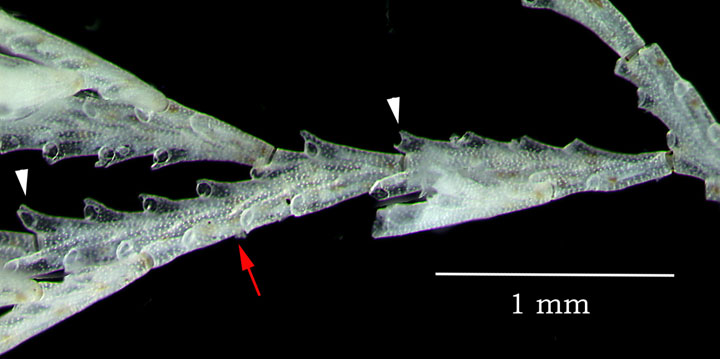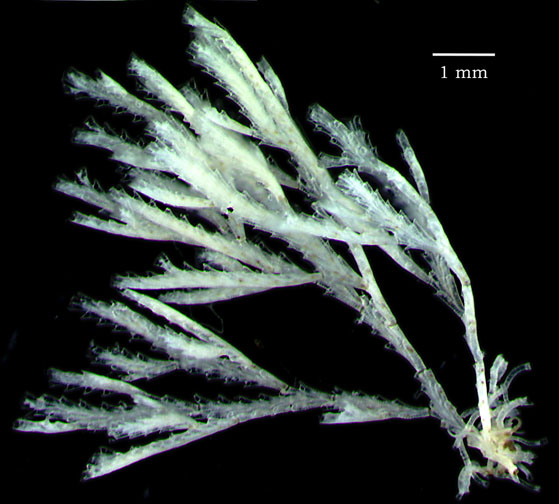Crisia occidentalis Trask, 1857
Like all cyclostome Bryozoa, the zooecia of this species are long, tubular and calcified, with a circular terminal aperture. The zooecia are fused at the base, forming internodes that are separated by joints (called nodes). In the genus Crisia, the zooecia are arranged in two alternating series. The number of zooecia per internode (the region between two nodes) increases going from the base to the edge of the colony, and is an important characteristic used to distinguish different species. C. occidentalis can have from three to twelve zooecia per internode. In the detailed view above, the internode (red arrow) on the left is the segment between the two joints indicated by the white arrows. This internode is made up of twelve zooecia. The specimens we have collected from San Francisco Bay have been relatively easy to identify as C. occidentalis on the basis of the prominent spines on the far end of each aperture. This example is from Pier 39.


